Hair care routine
Shampoo and condition your hair regularly: Use a shampoo that suits your hair type and scalp condition, and follow it up with a conditioner. How often you should wash your hair depends on your hair type and scalp condition, but generally, every other day or every two days is recommended.
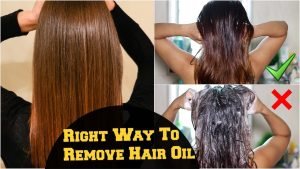
people prefer to wash their hair more or less frequently depending on their individual needs. For example, people with very oily hair may need to wash their hair daily, while people with very dry or curly hair may need to wash their hair less frequently to avoid stripping it of natural oils.
It’s important to find a balance that works for you and your hair type. Additionally, when shampooing your hair, it’s important to massage your scalp to promote blood circulation and stimulate hair growth. And when conditioning your hair, focus on the ends and avoid applying too much conditioner to the roots, as this can weigh down your hair and make it appear greasy.
Some additional tips for using a heat styling :
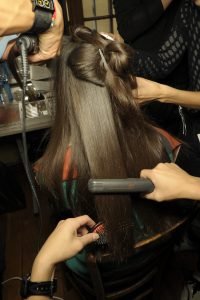
Avoid excessive heat styling: Limit the use of heat styling tools like flat irons, curling irons, and blow dryers as they can damage your hair. If you must use them, use a heat protectant spray and avoid using them on wet hair.
other tips to reduce heat damage to your hair include:
Let your hair air dry as often as possible: This is the gentlest way to dry your hair and reduces the amount of heat exposure from blow dryers.
Use a lower heat setting on your styling tools: If you must use heat styling tools, use a lower heat setting to reduce the amount of heat damage to your hair.
Don’t hold heat styling tools in one spot for too long: Move the styling tool around your hair to prevent overheating one spot and causing damage.
Use ceramic or tourmaline tools: These materials distribute heat more evenly and can reduce the amount of heat damage to your hair.
Avoid using heat styling tools every day: Give your hair a break from heat styling by embracing your natural texture or trying heatless hairstyles.
Remember, heat damage can cause breakage, split ends, and make your hair look dull and lifeless. By reducing your use of heat styling tools and taking steps to protect your hair from heat damage, you can keep your hair looking healthy and strong.
Protect your hair from the sun: UV rays can damage your hair, so wear a hat or use a leave-in conditioner with UV protection when you are out in the sun.
Additional tips to protect your hair from sun damage include:
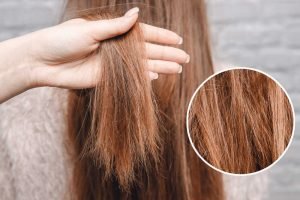
Apply a hair sunscreen: You can find specialized hair sunscreens that are designed to protect your hair from UV rays. These products can be applied before you go outside and can help prevent sun damage.
Wear a hat or scarf: Covering your hair with a hat or scarf can provide additional protection from the sun.
Avoid prolonged sun exposure: Limit the amount of time you spend in direct sunlight, especially during peak hours when the sun’s rays are strongest.
Rinse your hair after swimming: Chlorine and saltwater can be damaging to your hair, so it’s important to rinse your hair with fresh water after swimming to remove any salt or chlorine buildup.
Use a deep conditioning treatment: After spending time in the sun, use a deep conditioning treatment to help restore moisture to your hair and prevent damage.
Remember, just like your skin, your hair can be damaged by UV rays from the sun. By taking steps to protect your hair from sun damage, you can keep your hair healthy and prevent damage like fading, dryness, and breakage.
Use a wide-toothed comb or brush: Use a wide-toothed comb or brush to detangle your hair, starting from the ends and working your way up to the roots.
Some additional tips for using a wide-toothed comb or brush to detangle your hair include:
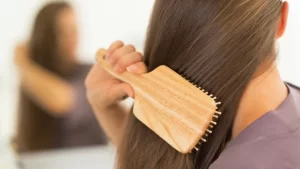
Be gentle: When detangling your hair, be gentle and avoid pulling or tugging too hard, as this can cause breakage and damage.
Start from the ends: Begin detangling your hair from the ends, working your way up to the roots. This helps to prevent knots and tangles from getting worse.
Use a detangling spray or conditioner: If your hair is prone to tangles, use a detangling spray or apply a leave-in conditioner before combing to help make the process easier.
Avoid combing wet hair: Wet hair is more prone to breakage, so it’s best to avoid combing your hair when it’s wet. If you must comb wet hair, use a wide-toothed comb and be extra gentle.
Clean your comb or brush regularly: To prevent product buildup and bacteria from accumulating on your comb or brush, clean them regularly with warm water and mild shampoo.
Remember, detangling your hair can be a delicate process, and it’s important to be patient and gentle to avoid damaging your hair. By using a wide-toothed comb or brush and following these additional tips, you can detangle your hair with ease and keep it looking healthy and strong.
Trim your hair regularly: Get a trim every 6-8 weeks to keep split ends at bay and promote healthy hair growth.
Some additional tips for trimming your hair regularly include:
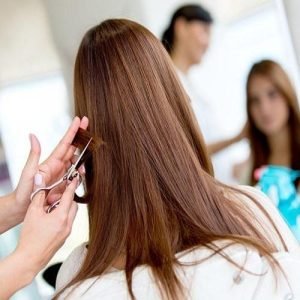
Find a trusted hairstylist: Choose a hairstylist who understands your hair type and can help you achieve your hair goals while maintaining its health.
Communicate your needs: Let your hairstylist know how much you want to trim off, and communicate any concerns or questions you may have about the process.
Don’t trim too much: While regular trims are important for maintaining healthy hair, it’s important not to trim too much. Only trim off the amount necessary to keep split ends at bay and maintain your desired style.
Consider the timing: If you’re trying to grow out your hair, it may be best to wait longer between trims or opt for a dusting, which removes only the very ends of your hair.
Maintain a healthy hair care routine: Regular trims can help keep your hair healthy, but it’s also important to maintain a healthy hair care routine with regular washing, conditioning, and protecting your hair from damage.
Remember, regular trims are an essential part of maintaining healthy hair and preventing split ends. By finding a trusted hairstylist and following these additional tips, you can keep your hair looking healthy and strong.
Use hair masks and treatments: Use a hair mask or treatment once a week to nourish your hair and keep it healthy. You can use natural ingredients like coconut oil, honey, or aloe vera to make your own hair masks.
some additional tips for using hair masks and treatments include:
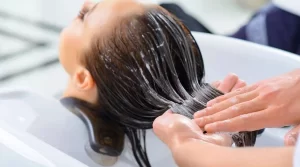
Choose the right type of mask or treatment: There are many different types of hair masks and treatments available, each designed to address different hair concerns. Choose a product or recipe that is suited to your specific hair type and needs.
Apply to clean, damp hair: For best results, apply your hair mask or treatment to clean, damp hair, and leave it on for the recommended amount of time before rinsing it out.
Focus on the ends: When applying your mask or treatment, focus on the ends of your hair, where damage is most likely to occur. Avoid applying it to your scalp, as this can lead to greasy hair.
Rinse thoroughly: When you’re done with your hair mask or treatment, rinse your hair thoroughly to remove any residue.
Use regularly: To see the full benefits of using a hair mask or treatment, it’s important to use them regularly. Aim to use a hair mask or treatment once a week, or as recommended by the product instructions.
Remember, hair masks and treatments can help nourish and strengthen your hair, but it’s important to choose the right product or recipe and use it correctly. By following these additional tips, you can keep your hair looking healthy and strong.
Eat a healthy diet: Your hair needs nutrients like vitamins, protein, and minerals to stay healthy, so make sure you eat a balanced diet that includes plenty of fruits, vegetables, and lean protein.
Some additional tips for eating a healthy diet to promote healthy hair growth include:
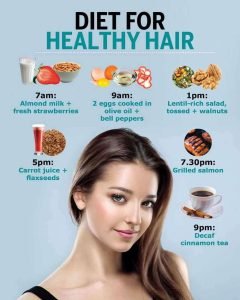
Eat enough protein: Protein is a key building block for healthy hair, so make sure you’re getting enough of it in your diet. Good sources of protein include lean meats, fish, eggs, beans, and nuts.
Eat a variety of fruits and vegetables: Fruits and vegetables provide a wide range of vitamins and minerals that are essential for healthy hair growth. Aim to eat a variety of colors to ensure you’re getting a range of nutrients.
Incorporate healthy fats: Healthy fats, such as those found in nuts, seeds, and avocados, can help nourish your hair and keep it looking shiny and healthy.
Stay hydrated: Drinking plenty of water can help keep your hair hydrated and prevent it from becoming dry and brittle.
Consider taking supplements: If you’re not getting enough nutrients from your diet, consider taking supplements specifically designed to support healthy hair growth, such as biotin or vitamin D.
Remember, what you eat can have a significant impact on the health of your hair. By following these additional tips and eating a healthy, balanced diet, you can nourish your hair from the inside out and keep it looking healthy and strong.
Remember, everyone’s hair is different, so it’s important to find a routine that works best for you and your hair type.
For more blogs visit here: https://bloggbuzz.com/

